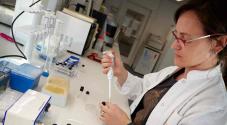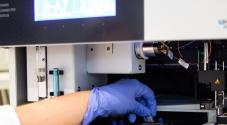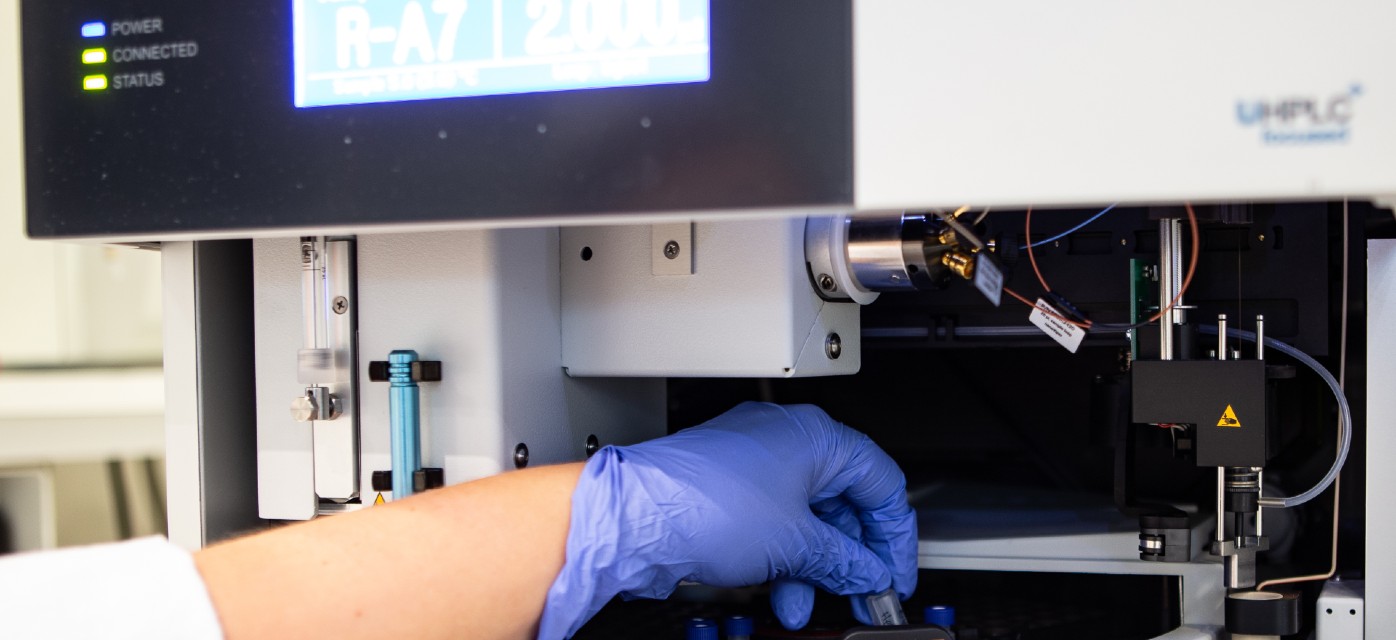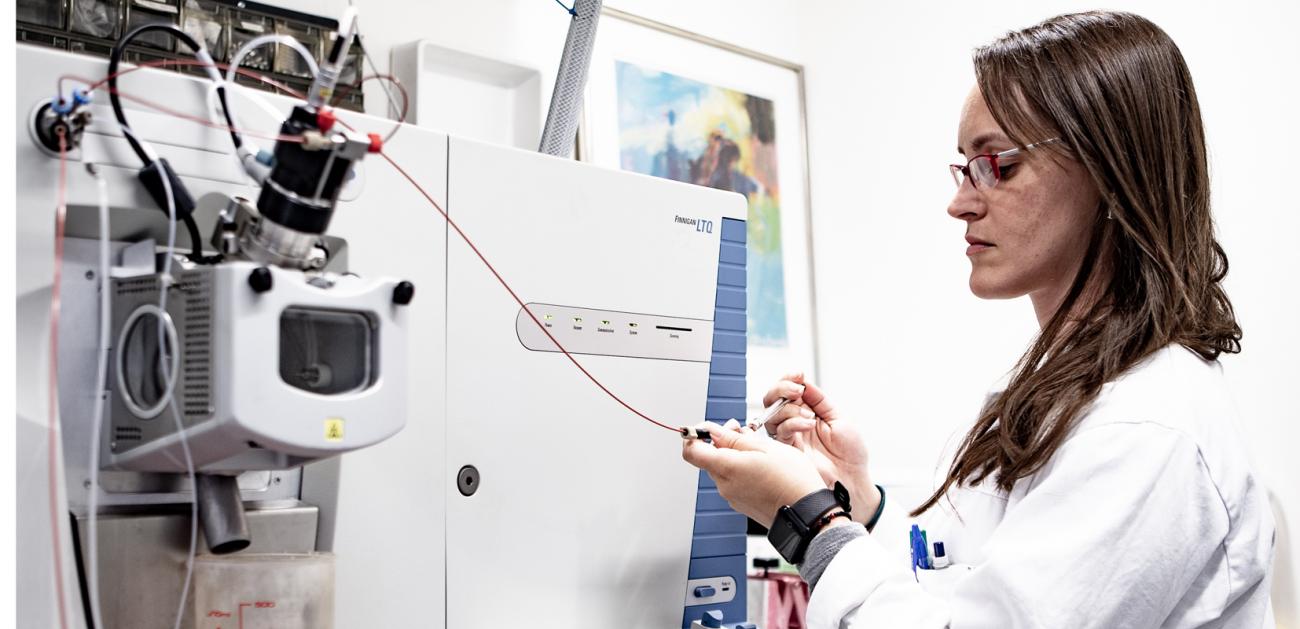Chemistry
The Chemistry Research Group conducts fundamental and applied research in a variety of areas, and many of the research projects have strong connections with Chemical Biology. The sustainable development and application of chemistry is a common theme in our research, which drives many of our projects in green chemistry and energy, molecules of medicinal and biological interest, biophysical and protein chemistry, enzyme catalysis, and chemical characterization. Research efforts in these areas, for example, resulted in the development of new medicines and new chemical tools for studying biological molecules and processes, and molecular interactions. Through these research activities the next generation of scientists receive a training in fundamental and cutting edge theory, together with modern practical laboratory techniques and skills.
Key areas of interest include:
- Biophysical and biological chemistry (protein structure and interactions by NMR, hydrogen bonding, oligomerization, fibril formation and gelation)
- Enzymology (catalysis, hydrolytic enzymes)
- Energy and sustainability (solar cell chemistry, biodegradable plastics, electrochemistry)
- Organic synthesis and chemical biology (methods development, bioactive compounds and new medicines, bioconjugates, biopolymers, drug delivery systems)
- Proteomics and Metabolomics (chemical characterization of biological processes, mass spectrometry, NMR and multivariate analysis)
- Analytical chemistry (chromatography and mass spectrometry methods, sensor development)
- Surface chemistry (development and characterization of peptoid nanosheets, molecular probes and interactions)
As an interdisciplinary hub, the Chemistry Group plays a key role in collaborative research projects conducted with internal and external academic partners working in areas such as; molecular, medical, and environmental biology, as well as mathematics and physics. The group is a founding member of the 兴发娱乐官网手机版客户端 University Center for Frustrated Molecular Interactions, which drives and conducts larger scale research programs. In addition to these activities, the group has many collaborations with major Danish and international research institutions and industrial partners.

-
Contact
William Goldring, Associate Professor, Head of Chemistry Section, goldring@ruc.dk
Reseachers
Gustavo Penteado Battesini Carretero, Postdoc, gpbc@ruc.dk
Frederik Diness, Associate Professor, diness@ruc.dk
William Goldring, Associate Professor, goldring@ruc.dk
Jeppe Kari, Associate Professor, jkari@ruc.dk
Torben Lund, Associate Professor, tlund@ruc.dk
Anders Malmendal, Associate Professor, amalm@ruc.dk
Biljana Mojsoska, Associate Professor, biljana@ruc.dk
Poul Erik Hansen, Professor Emeritus, poulerik@ruc.dk
S?ren Hvidt, Associate Professor Emeritus, hvidt@ruc.dk
Jens Josephsen, Associate Professor Emeritus, phjens@ruc.dk
John Mortensen, Associate Professor Emeritus, john@ruc.dk
Jens Spanget-Larsen, Associate Professor Emeritus, spanget@ruc.dk
-
Based in a new building equipped with modern infra-structure, chemistry researchers in the DSC work with state-of-the-art instrumentation and analytical facilities, such as:
Mass Spectrometry
Associate Prof. Torben Lund (tlund@ruc.dk)
Associate Prof. Biljana Mojsoska (biljana@ruc.dk)
Rosa Jersie-Christensen, PhD (rrj@ruc.dk)LC-MS
LTQ-XL Thermo Finnigan linear ion-trap mass spectrometer with a HESII electro spray ion source, coupled to a Dionex Ultimate 3000 UHPLC and a diode array detector.
Instrument use: Analysis of ruthenium dyes, natural products, intact proteins, peptides, organic reaction mixtures.Q Exactive Plus, high resolution mass spectrometer coupled to a Dionex Ultimate 3000 nano-HPLC.
Instrument use: Proteomics and exact mass determinations.GC-MS
Thermo Scientific Trace 1300 GC coupled to a ISQ-7000 EI-MS and a TDC detector. The instrument includes a Triplus RSH autosampler with PTV and head-space injection.
Instrument use: PCB and gas-molecule detection (H2, CO, CO2…).Nuclear Magnetic Resonance (NMR) Spectrometer
Associate Prof. William Goldring (goldring@ruc.dk)
Associate Prof. Anders Malmendal (amalm@ruc.dk)
Operator: Annette Christensen (acis@ruc.dk)Bruker Ascend 400 MHz, including auto-sampler and BCU II variable temperature control
Instrument use: Analysis of synthesis and natural products, biological material, and molecular complexes. Methods include, structure characterization and elucidation using a variety of routine and non-routine one- and two-dimensional experiments.Dynamic Light Scattering (DLS)
Associate Prof. S?ren Hvidt (hvidt@ruc.dk)
Malvern Zetasizer Nano-S
Instrument use: Analysis of nanoparticles, including materials and biological complexes, for particle size measurement and polydispersity determination.Other instruments
The section is also equipped with a number of other instruments, such as infrared and UV spectrometers, preparative and analytical chromatographic equipment (HPLC, radial LC, size exclusion), rheometers (Bohlin VOR and Haake RS100), calorimeters (ITC and DSC), photochemical lamps (400 and 125 W medium pressure Hg) and reaction vessels, and chemical computation facilities (Gaussian and Macromodel).
Publications
Highly sensitive luciferase-based assay with red fluorescent protein expression for accurate quantitative monitoring and real-time visualization of cell invasion
Christensen, M. L., Kirkegaard, T., G?genur, I., Diness, F., Troelsen, J. T. & Jessen, S. B., Jan 2026, In: Analytical Biochemistry. 708, 8 p., 115986.Research output: Contribution to journal ? Journal article ? Research ? peer-review
Are cellulases slow? Kinetic and thermodynamic limitations for enzymatic breakdown of cellulose
兴发娱乐官网手机版客户端sth, P., Kari, J., Badino, S., S?rensen, T., Christensen, S., R?jel, N., Schiano-di-Cola, C. & Borch, K., 2025, In: BBA Advances. 7, 12 p., 100128.Research output: Contribution to journal ? Review ? peer-review
Biofilm prevention and quorum sensing interference via surface-bound peptoid
Gamna, F., Cochis, A., Carretero, G. P. B., Curcic, J., Mojsoska, B., Malesevic, M., Najmi, Z., Rimondini, L. & Spriano, S., 1 Sept 2025, In: Surfaces and Interfaces. 72, 13 p., 107390.Research output: Contribution to journal ? Journal article ? Research ? peer-review
Activities
NMR apparater i gymnasieskolen?
Hansen, P. E. (Speaker)
2 Oct 2025Activity: Talk or presentation ? Lecture and oral contribution
The 26th International Conference on Horizons in hydrogenbond research 2025
Hansen, P. E. (Participant)
15 Sept 2025 → 19 Sept 2025Activity: Participating in or organising an event ? Participation in workshop, seminar, course
A Kalejdoscopic View of Intramolecular Hydrogen Bonds
Hansen, P. E. (Speaker)
29 Aug 2025Activity: Talk or presentation ? Lecture and oral contribution
Insights

Base at 兴发娱乐官网手机版客户端 University
The research groupis based at Department of Science and Environment
Related research units: FRUSTMI research centre // Environmental Dynamics research group // Molecular and Medical Biology research group // Mathematics and Physics research group
PhD Programme: Doctoral School of Science and Environment
Uddannelser og fag: Chemistry // Chemical Biology // International 兴发娱乐官网手机版客户端 in Natural Sciences

More information
Find additional information about Chemistry:
Research group website at 兴发娱乐官网手机版客户端 University Research Portal

Contact
Research group leader
William Goldring
Associate Professor
Phone +45 4674 2308
goldring@ruc.dk





